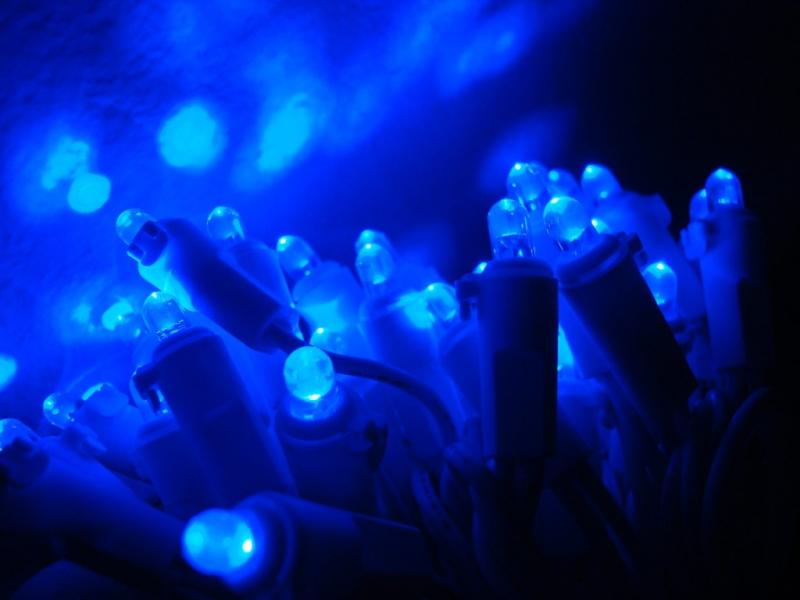
What today’s photonics industry can learn from the quest for the blue LED
What today’s photonics industry can learn from the quest for the blue LED
LEDs will continue to play a significant role as the photonics industry embarks on what’s next.
March 20, 2024
The global LED lighting market grew to USD 81.48 billion in 2023, and forecasts project a compound annual growth rate (CAGR) of 11.0% through 2030. The continued meteoric rise stems from one important discovery: the blue LED. That development single-handedly enabled the creation of white light from LEDs and led to their application in many diverse fields.
Indeed, the 2014 Nobel Prize in Physics honored the work of Isamu Akasaki, Meijo University, Nagoya, Japan, and Nagoya University, Japan; Hiroshi Amano, Nagoya University, Japan; and Shuji Nakamura, University of California, Santa Barbara, CA, USA, “for the invention of efficient blue light-emitting diodes which has enabled bright and energy-saving white light sources.”
The path to blue
But the discovery of the blue LED was a long time in the making. The documentary, Why It Was Almost Impossible to Make the Blue LED, chronicles the journey toward a commercially viable solution, with much of the market-based effort led by Nakamura—in part to the chagrin of corporate leadership at then-employer Nichia Corporation. Indeed, Nakamura famously ignored the company’s repeated requests for him to stop working on the blue LED—a fortunate decision for the industry.
In 1992, Nakamura became the first to develop a market-ready blue LED, offering a light output power of 1500 μW, emitting a perfect blue at 450 nm and holding 100 times the brightness of the pseudo-blue LEDs on the market that year. With 30 years of research from several scientists and engineers in many disciplines, it was Nakamura’s unique combination of factors that led to the breakthrough. By the end of 1994, he had helped Nichia meet orders of one million blue LEDs per month. Then, merely two years later, by placing a yellow phosphor over the blue LED, Nichia introduced the world’s first white LED, revolutionizing opportunities.
Lessons for today
LEDs will continue to play a significant role in research and development as the industry examines new ways of addressing technologies from augmented and virtual reality (AR/VR) to pathogen management. But as the photonics industry grapples with these challenges, the quest for the blue LED can offer a guidepost for how to advance research possibilities. Overall, it provides a story of perseverance and resilience and offers important lessons for today’s photonics landscape.
For one, persistence and dedication pay off. Nakamura ruthlessly pursued the path toward the blue LED: The documentary reported that every day for a year and a half, he worked for 12 hours on the efforts, taking only New Year’s Day off. In addition, when corporate leadership ordered him to stop his work, he disregarded the request. He knew that he was onto something, and his confidence in the direction he was taking allowed him to proceed despite detractors.
In addition, looking at Nakamura’s work, one of the foundational principles he uncovered was that quality matters: The high-quality crystal was the first critical component in forming the blue LED. He applied that same focus on quality to his research, leveraging strategic trial and error to analyze and pinpoint the precise characteristics necessary for the blue LED’s formulation.
Finally, this story stresses the importance of never counting out the underdog. Researchers had nearly abandoned gallium nitride to support the blue LED. But still, Nakamura saw its potential and kept working with it, a decision that resulted in his success and shocked those who thought it impossible. As the documentary stated, the electronics industry was “caught with their pants down” when Nichia announced that he had created the blue LED with gallium nitride.
What the future holds
LEDs will continue to play a significant role as the photonics industry embarks on what’s next. Nakamura, for example, sees much potential in micro and UV LEDs for technologies ranging from AR/VR devices to hospital sanitation systems. But his research interests scale broader in the physics landscape: He recently launched a company to address issues with nuclear fusion.
And no matter the problem, one factor remains certain: Issues will arise. However, Nakamura isn’t worried. As he shared in the video, it’s a matter of time until researchers succeed. And in and of itself, that is a critical lesson for the photonics industry.